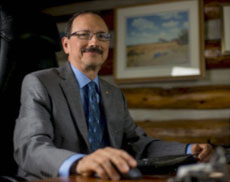Most organizations evolve organically. A new role is added here, a reporting line shifts there, and before long what began as a clear structure starts to resemble sedimentary rock, layer upon layer formed by past decisions rather than deliberate design. It is no wonder that many leaders struggle with diluted focus, redundant work, and unclear accountability.
Organization design is not guesswork. It is science. There are universal principles that determine how many layers an organization needs and what kind of work belongs in each layer. The foundation of that science is based on the concept of complexity of work: the level of problem-solving complexity required in each role, measured by the time span of discretion a person must manage before results are due.
Why Complexity of Work Matters
Think about it this way. A frontline worker might complete tasks with outcomes due today or tomorrow. A manager, by contrast, must plan months ahead. A director may make decisions that take one to two years to fully bear fruit. Each of these represents a different level of complexity of work.
When an organization has too few layers, people are overloaded with tasks beyond their capability. When there are too many layers, accountability becomes blurred and progress slows. In both cases the structure undermines performance, no matter how talented the people.
From Art to Science
Elliott Jaques discovered that the time span of discretion provides a measurable way to understand organizational complexity. It gives leaders a scientific basis for determining how many layers are required and where each role fits. This is why I often describe complexity of work as an alternate term for organization design. It is the scientific foundation that defines how work should be structured.
Of course, applying the science requires art. Leaders must interpret strategy, align functions, and prepare for the future. The best organization design combines both: science to define structure and art to make it practical.
Design Determines Everything Else
Once the layers are right, everything else falls into place. Accountability becomes clear. Delegation flows smoothly. Managers spend more time on value-added work, and employees can see how their efforts connect to the organization’s goals. Without that foundation, even the most inspiring strategy will struggle to take hold.
Learn How to Apply the Science
If you would like to explore this topic more deeply, join me for the CMC Canada Master Class: “Beyond the Org Chart – The Science and Art of Organization Design.
In this two-hour session, I will show how to use complexity of work as a diagnostic tool to improve performance in client organizations and consulting projects.






